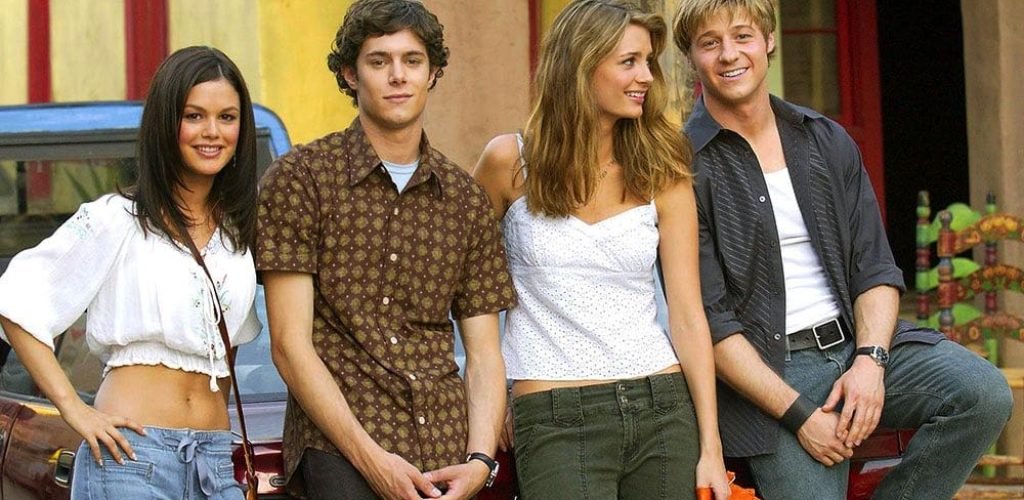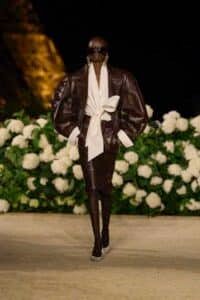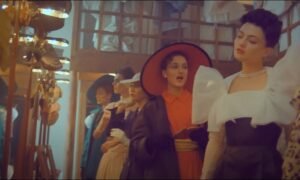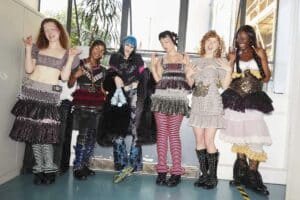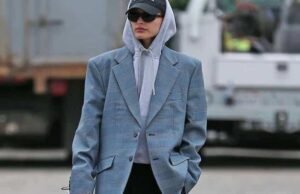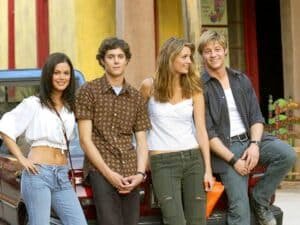From Britney to TikTok: a style that never really left
If fashion runs in cycles, then the early 2000s are officially back on stage. What was once dismissed as “too flashy” or “over the top” has been rebranded as cool, ironic, and irresistibly playful.
Think wedge sneakers, baby tees, baguette bags, butterfly clips and glossy lips—the Y2K aesthetic has returned with full force. Millennials embrace it as a time capsule of their teenage years, while Gen Z reinterprets it with fresh eyes, turning it into a playground of digital optimism.
Pop culture’s golden years
The early 2000s weren’t just about clothes; they were a defining era for global pop culture. MTV ruled, music videos dictated trends, and icons like Britney Spears, Beyoncé and NSYNC shaped not just playlists but wardrobes.
Hollywood churned out rom-coms and teen movies that became instant cult classics, while reality TV (The Simple Life, MTV Cribs) fed the dream of excess. Meanwhile, technology made individuality louder: flip phones, MySpace, MSN Messenger and iPods gave rise to an interconnected youth culture.
The vibe was clear: glamour, playfulness, and digital optimism—an energy today’s revival tries to bottle up again.
Social media as a time machine
So why the comeback now? Platforms like TikTok, Instagram and Depop work as modern mood boards. For Gen Z—too young to have lived Britney’s crop tops or Paris Hilton’s velour tracksuits—the Y2K aesthetic is retro escapism. It’s glittery, exaggerated, and blissfully pre-smartphone.
Fashion houses and fast fashion alike have cashed in. Blumarine and Diesel revived their 2000s DNA on the runway, while high-street brands are selling cargo pants, micro baby tees and those infamous mini baguettes that recall Sex and the City’s Carrie Bradshaw.
Beyond the closet: a full cultural reset
Y2K isn’t just about fashion. It has infiltrated every corner of pop culture:
- Music is flirting with pop-punk again, with remixed 2000s hits dominating TikTok.
- Beauty tutorials bring back frosted eyeshadow, high-shine gloss and colorful manicures.
- Even tech has joined the party: flip phones and early digital cameras are rebranded as retro-chic accessories.
The nostalgia feels like slipping back into MTV’s golden era, complete with rhinestone chokers and low-rise denim.
The debate: can we revive style without reviving toxic culture?
Nostalgia often peaks in uncertain times, offering comfort in what feels familiar and fun. But the Y2K comeback isn’t without tension.
The early 2000s were notorious for toxic beauty standards—ultra-thin bodies plastered across magazine covers. Today, inclusivity has shifted the conversation, raising a crucial question: can we bring back the look without dragging along the harmful culture of the time?
It’s a tightrope between embracing the glitter and rejecting the body shaming that once came with it.
Why it matters today
The Y2K revival proves that fashion is never just about clothes—it’s about memory, identity, and community. Celebrities like Dua Lipa, Bella Hadid and Olivia Rodrigo wear it with ease, while thrift shops and Depop feeds overflow with early 2000s relics.
Love it or hate it, Y2K fashion isn’t a fleeting microtrend. It’s a cultural recycling loop, adapted for a new generation. And as long as there’s nostalgia to tap into, it will never really disappear.

